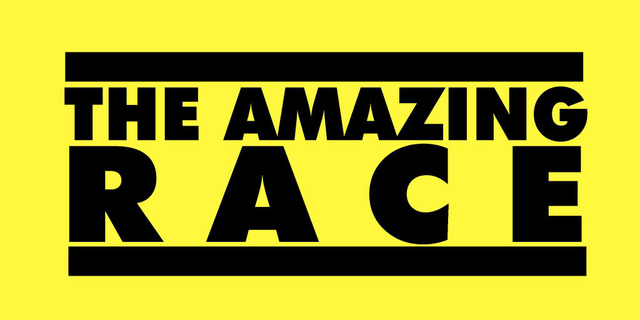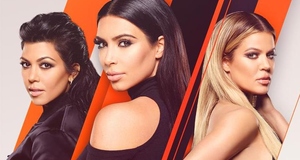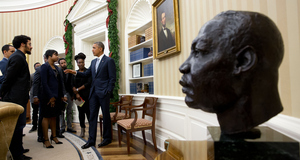International Travel, Nation-Branding, and Orientalism: Conflicting Portrayals of Americanism in The Amazing Race
By
2015, Vol. 7 No. 03 | pg. 1/2 | »
KEYWORDS:
Beyond merely claiming to represent 'reality,' reality television shows also inherently operate as “powerful ideological source[s] containing multiple sites of meaning... that help viewers to make sense of their social, political, economic and cultural worlds” (Winslow, 2010, p. 268). One of the ways this is done is by “taking people out of their own environment and placing them in one which is organised around values different from those they have previously expressed” (Lyle, 2008, p. 319). This is effectively demonstrated in The Amazing Race (CBS, 2001-present), which sends American teams around the world to complete tasks and race to pit stops in order to win $1 million (Muspratt & Steeves, 2012, p. 534). The Amazing Race portrays two conflicting ideologies: the first promotes global travel, encouraging American audiences to explore the world; the second explores what it means to be American by positioning the United States as a globally dominant nation.
This paper explores the ways in which The Amazing Race displays two diverging ideologies by removing American contestants from their natural environment (the United States), placing them in apparently authentic foreign cultures, and contrasting America with foreign nations. While The Amazing Race initially presents an ideology of global exploration, travel, and learning from other cultures, a contradiction is apparent in the portrayal of a globally dominant United States and the existence of a “hierarchy of nations” (Roy, 2007, p. 570) within which the U.S. sits at the top. Throughout this paper three episodes of The Amazing Race are considered: from season one, “The Unexpected Twist” (Doganieri & Van Munster, 2001), from season nine, “Here Comes the Bedouin” (Doganieri & Van Munster, 2006), and from season twenty, “I Didn’t Make Her Cry” (Doganieri & Van Munster, 2012). In the vein of Winslow (2010) and others, this paper focuses on the ideology the episodes present rather than the accuracy of the show’s portrayal of other countries.
For example, at the beginning of “I Didn’t Make Her Cry” (Doganieri & Van Munster, 2012), the contestants make comments like “Oh man!,” “Africa, here we come!” and “I never thought two country boys would be in a race and going to Africa!” when they discover their destination is Tanzania. One contestant jumps up and down screaming in excitement, later saying “This is my dream, I have wanted to go on an African safari for my whole life.” Upon arriving in Tanzania, contestants board a helicopter to fly to another location in the mountains. At this point, televisual codes are utilized to signal a change in pace. The camera shows large, sweeping landscapes, panning slowly across the mountains, rather than quick, short shots as is done during the rest of the race. The beginning of this episode is mainly filled with fighting and name-calling between teams in the airport, but this conflict and the fast-paced nature of the race is put on hold in the helicopter as contestants take the time to appreciate Tanzania’s natural beauty. In The Amazing Race “the world becomes a sounding board for the American subject, and the world’s people appear as objects to be looked at, smiled at, or occasionally frowned at, yet never fully fleshed-out individuals” (Gray, p. 98). At this point in the episode the absence of conflict and the presence of large landscape shots are accompanied by comments like, “Just to be in Africa flying around is awesome, how fortunate are we,” “It’s so beautiful here and I just feel so lucky to get to experience it,” and “It’s some of the most gorgeous landscape that we’ll ever see in our lives, I mean, this is once in a lifetime.” Further comments in this episode glorify exploring the world’s cultures. Contestants show excitement over experiencing the culture of a “real” Maasai tribe, continually telling the Maasai “Your place is beautiful” and thanking the Maasai for allowing them to participate in their culture. These types of comments suggest that global travel is something special, worth-while, and perhaps even life-changing, carrying on even when contestants are eliminated from the show. Contestants regularly have something positive to say to the camera about how travelling the world has impacted them. For example, in “The Unexpected Twist” (Doganieri & Van Munster, 2001), mother-daughter team Nancy and Emily leave the show saying “we haven’t always been so close, but I think its opened a whole new door in our relationship.” In promoting travel these comments exoticize other countries, leaving something to be desired about experiencing foreign cultures (Kuppens & Mast, 2012, p. 804) and contributing to an ideology that supports international travel. However, this exoticization is often entangled in the act of othering (p. 804), which supports a second ideology. Contrary to the ideological promotion of global exploration and travel, The Amazing Race also presents an ideology of a globally dominant United States, taking part in what Roy (2007) calls the creation of a “hierarchy of nations” or “nation-branding” (p. 570). In travel reality shows like The Amazing Race, nation-branding works to demonstrate what it means to be American by portraying America as “‘masters’ of globalization, and therefore, as modern nations,” placing them at the pinnacle of the “hierarchy of nations” (p. 570). By having one single and constant identity (American) define and consume upwards of nine or 10 different cultures within one season alone demonstrates what Harvey (2006) calls a “hegemonic ploy” (p. 215). This hegemonic ploy “can only be maintained through a struggle and tension between dominant and subordinate groups” (O’Shaughnessy, 1990, p. 90) and is presented in The Amazing Race through the othering of non-American countries/cultures (Kuppens & Mast, 2012, p. 804) with an attitude that, as will be later explored in detail, mirrors Orientalism. This is seen through the focus on the American contestants, the social codes and stereotypes that present certain countries (or aspects of countries) as dangerous, chaotic and unpredictable, and the conflict between American contestants and locals in terms of language barriers. The remainder of this paper will explore these aspects of the show in detail, explaining how they contribute to creating the ideological image of a globally dominant United States. In The Amazing Race foreign countries and cultures are viewed through the eyes of the American contestants, which reveals how the show is engaged in Orientalism and othering to contribute to the ideology of a globally dominant United States. Orientalism, a concept tied to colonialism, is “a Western style for coming to terms with the Orient” (Moosavinia, Niazi & Ghaforian, 2011, p. 104). It involves comparing Western nations with Oriental nations to define the Western nations as the Self and the Oriental nations as the Other (p. 104). Since Orientalism involves Westerners creating their own definition of the cultures they label as the Other, this can work towards strengthening Westerners’ “own identity and superiority” (p. 105). This is done in many colonial novels (and in turn in The Amazing Race) in which “the Orient and Orientals are viewed through the lens of a Western writer who has taken the upper hand to manipulate, construct and represent the Orient” (p.105). In The Amazing Race however, this applies to more than just Oriental countries. For this analysis, Orientalism should be thought of as a general framework of othering, rather than a notion that only applies to certain countries. In The Amazing Race, a postmodern form of traditional Orientalism, the locals of the countries visited “are typically denied any form of ‘voice’ and ‘agency’” (Kuppens & Mast, 2012, p. 801), and “Western contestants are the primary actors … [locals] are merely a part of the landscape” (Muspratt & Steeves, 2012, p. 536). This can be seen as a form of displacement, the omission of certain issues and viewpoints (O’Shaughnessy, 1990, p. 97), and is evident in “I Didn’t Make Her Cry” (Doganieri & Van Munster, 2012), the same episode that so blatantly glorifies travel. In this episode, while the contestants express their excitement at experiencing Maasai culture, the Maasai literally act as part of the landscape to set the scene of an authentic Maasai village in remote Tanzania. While contestants complete ‘traditional’ Maasai tasks, a large number of Maasai stand behind them to portray social codes, i.e. the way they dress, to make the scene look authentic, not speaking and occasionally clapping or cheering when contestants complete tasks successfully. This episode also shows how “because of the race, many interactions with locals along the way reduce them to passive pointers” (Gray, 2013, p. 97). One team asks a Maasai warrior, who hands them their next clue, “how are you doing?” but the answer is never heard as the camera cuts to the contestants racing to their next task (Doganieri & Van Munster, 2012). Yet another example of the dominance of American viewpoints can be found near the end of every episode of The Amazing Race. At the pit stop of each leg of the race contestants are greeted by host Phil Keoghan, who stands alongside a local donned in traditional clothing who welcomes teams in their own language (Mathews, 2012, p. 262). For example, in “I Didn’t Make Her Cry” (Doganieri & Van Munster, 2012) it is a Maasai man wearing traditional Maasai robes and necklaces, and in “Here Comes the Bedouin” (Doganieri & Van Munster, 2006) it is an Arabic man with a toothless smile in a white robe and head covering. However, after hearing the local say welcome, Keoghan takes over and “the ‘native’ welcomers are never invited to contribute to these discussions, nor to provide further context or additional information” (Gray, 2013, p. 97). The displacement of the voices of locals in foreign countries and the focus on the voices of American contestants carries heavy implications as this signifies the show’s engagement in Orientalism and othering. In The Amazing Race “the world becomes a sounding board for the American subject, and the world’s people appear as objects to be looked at, smiled at, or occasionally frowned at, yet never fully fleshed-out individuals” (p. 98). The world’s people are instead grouped into the category of the less superior Other, and the American contestants into the category of the far superior Self (Kuppens & Mast, 2012, p. 804; Moosavinia et al., 2011, p. 105). Nation-branding and othering also involve making a nation seem better and safer than the rest of the world (Roy, 2007, p. 576), which is done in The Amazing Race through the social codes and stereotypes that make certain countries (or aspects of countries) seem dangerous, chaotic and unpredictable for the American contestants. As with Orientalism, certain countries on The Amazing Race are “imposed as everything that the West [or America] is not, exotic, alien, dangerous, unreliable, to be tamed, exhibited, a threat to the West” (Moosavinia et al., 2011, p. 105). This is highly evident in the depiction of the streets of India in “The Unexpected Twist” (Doganieri & Van Munster, 2001), which Keoghan’s voiceover describes as “chaotic” and “a challenge” for the contestants.Continued on Next Page » Suggested Reading from Inquiries Journal
Inquiries Journal provides undergraduate and graduate students around the world a platform for the wide dissemination of academic work over a range of core disciplines. Representing the work of students from hundreds of institutions around the globe, Inquiries Journal's large database of academic articles is completely free. Learn more | Blog | Submit Latest in Business & Communications |

















